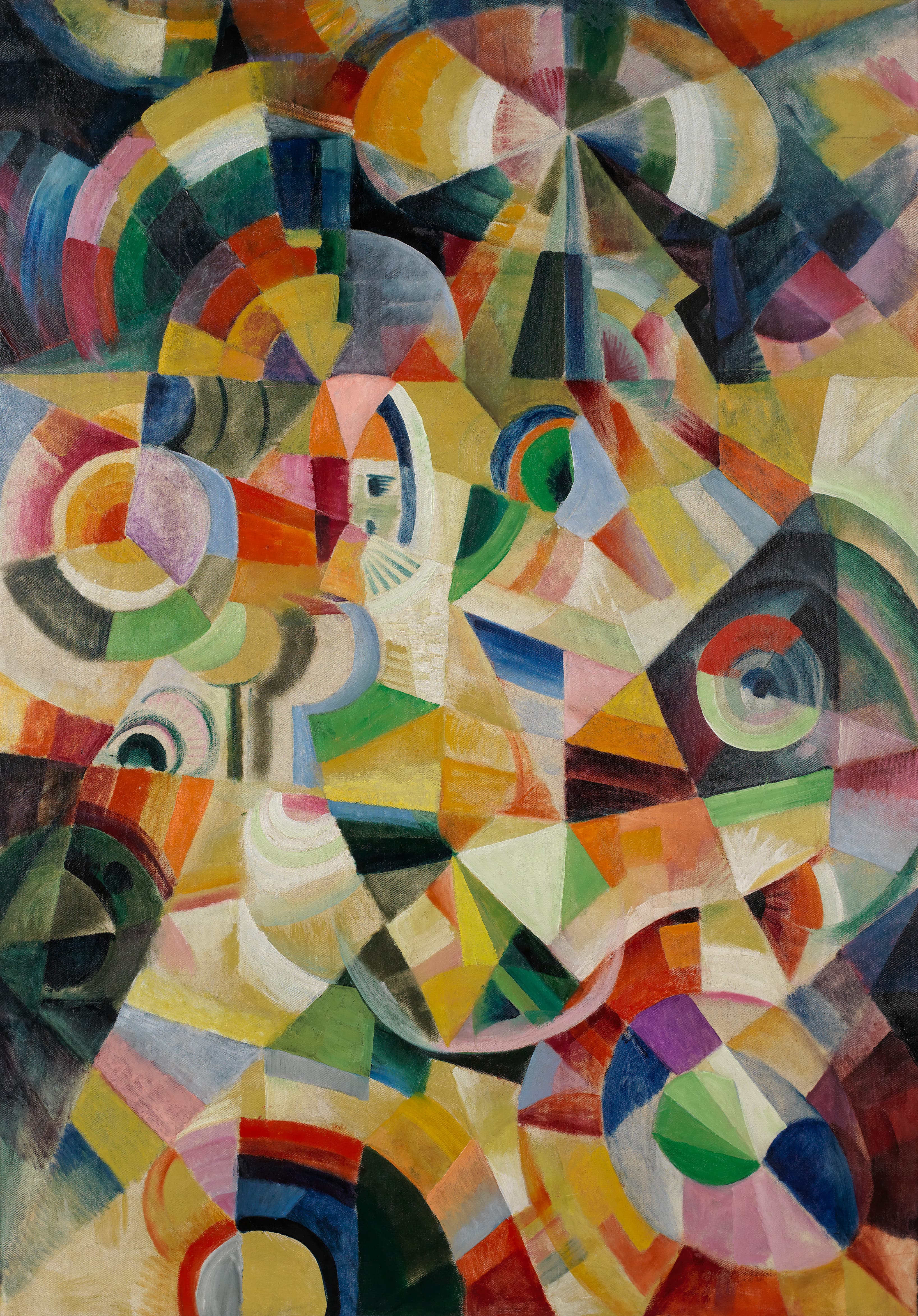The Marion Lichardus-Itten Gift

Introduction
The renowned prehistorian and archaeologist Marion Lichardus-Itten, daughter of the artist Johannes Itten and his second wife Anneliese, donated ten of her father’s outstanding works to Kunstmuseum Bern in 2024. Eight of the paintings are now being presented to the public for the first time. They cover a period from 1917 to 1964, providing a representative insight into the wide-ranging work of the Swiss painter, art theorist and art educator.
Johannes Itten is considered a key figure in the development of modern art education and theories of colour and form. He became particularly well-known for his work on colour theory and his teaching at the Bauhaus in Weimar, where he worked until 1923. In 1938 he returned to Switzerland and served both as a tutor and director of the Zürich School of Applied Arts until 1954. He spent his childhood in the Bernese Oberland and in Thun. Itten’s daughter Marion was born in Zürich in 1941, the first of three children. She studied prehistory and protohistory, earning her doctorate and subsequently working as a conservator at the Swiss National Museum. Following teaching posts at various universities, Lichardus-Itten became a professor in 1988, serving as such at the Sorbonne in Paris until her retirement in 2006. For many years, she has represented the Itten family alongside her brother Klaus Itten (1944–2023) in the Johannes Itten Foundation, which was founded in 1992 and is associated with Kunstmuseum Bern. She succeeded her brother as president from 2007 to 2024.
The ten works represent a significant expansion of the collection. Kunstmuseum Bern is deeply grateful to Marion Lichardus-Itten for her generous gesture as well as her long-standing and ongoing commitment to the Johannes Itten Foundation.
About the works
A Feast for the Eyes: Johannes Itten’s new paintings at Kunstmuseum Bern
Johannes Itten made his first public appearance as an artist in the form of his oil painting Vorfrühling an der Rhone (Early Spring on the Rhône) in December 1911 at Kunstmuseum Bern’s Christmas exhibition. Through the Johannes Itten Foundation his oeuvre has been associated with the Kunstmuseum since 1993. It is therefore fitting that the donation of ten paintings from the collection of his daughter, Prof. Dr. Marion Lichardus-Itten, will once again be providing his art with a prominent place in Kunstmuseum Bern.
The donation comprises major works from key creative periods. In the painting Ländliches Fest (Rural Feast), rhythmically coloured, abstract circular segments rotate like a lively Mayday dance. In the image painted in Vienna in 1917, Itten has transformed, with great levity, the formal principles of Cubism, Simultanism and Orphism into his own pictorial language, at the centre of which physical movements and the viewer’s resting eye can be found paradoxically merging. Life as art, art as life, the balance between abstraction and the reality of life are all interrelating levels informing Itten’s art.
Itten had already made a transition to complete geometric abstraction in Stuttgart in 1915, but never considered it to be the only possible ‘world art language’. In 1963 he reconstructed from memory his key work Horizontal-Vertikal (Horizontal-Vertical) from 1915, which he had thought lost and whose recreation was shown at the Swiss Pavilion at the Venice Biennale in 1966, before he rediscovered the early version of the work in 1967. The extent to which Itten always bound his colour field compositions to musical harmonies is demonstrated by his oil painting Concerto grosso (Grand Concerto) from 1959.
References to landscape and nature was never lost in the work of the former farm boy from the Bernese Oberland, as can be witnessed in the 1964 painting Felder im Frühling (Fields in Spring) employing seasonal colour tones. In the painting Simultane Diagonalen (Simultaneous Diagonals) from 1964, all references to quotidian life have been deliberately dissected in favour of a purely abstract pictorial matrix.
In his greatest, intensely biographical explorations, Itten likewise returned to the power of the figurative. In such paintings as Der Skifahrer (The Skier) from 1928, he experimented with the possibilities of the photographic gaze, which subsequently assumed a despondent demeanour against the backdrop of a shattered world in the 1930 painting Der Mann am Meer (Man by the Sea).
In the painting Tellenwacht (William Tell on Guard), begun in 1940, Itten pays homage to the heroic figure of Swiss national mythology. Under the patriotic auspices of the ‘spiritual national defense’, he took a personal Rütli Oath after returning from Nazi Germany.
Throughout his life painting was and remained a feast for the eyes for the artist Johannes Itten, from his very first works through to his final paintings.
Christoph Wagner, President of the Johannes Itten Foundation